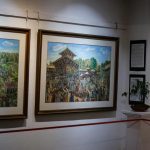Kathmandu: “Dust of Imagination,” a solo photography exhibition by visual artist Piyush Yadav, is a thoughtful exploration of the human condition through a minimalist lens. This exhibition, hosted at the Bikalpa Art Gallery, Pulchowk on a single floor, showcases 18 monochromatic artworks created in 2024. Each piece, included in “Dust of Imagination”, is an invitation for viewers to delve into their vulnerabilities and question the nature of their existence.
In this series, Yadav reflects on the imaginative process, stating, ‘In this series of artwork, I am exploring my imagination as a product of my self-understanding of the world.’ By collecting mannequins from garbage and repurposing them in his art, Yadav illustrates his unique philosophy: ‘Beauty found in imperfection. When I find myself adrift in my ideas and thoughts, the mannequin serves as a powerful metaphor for the stagnation of imagination.’
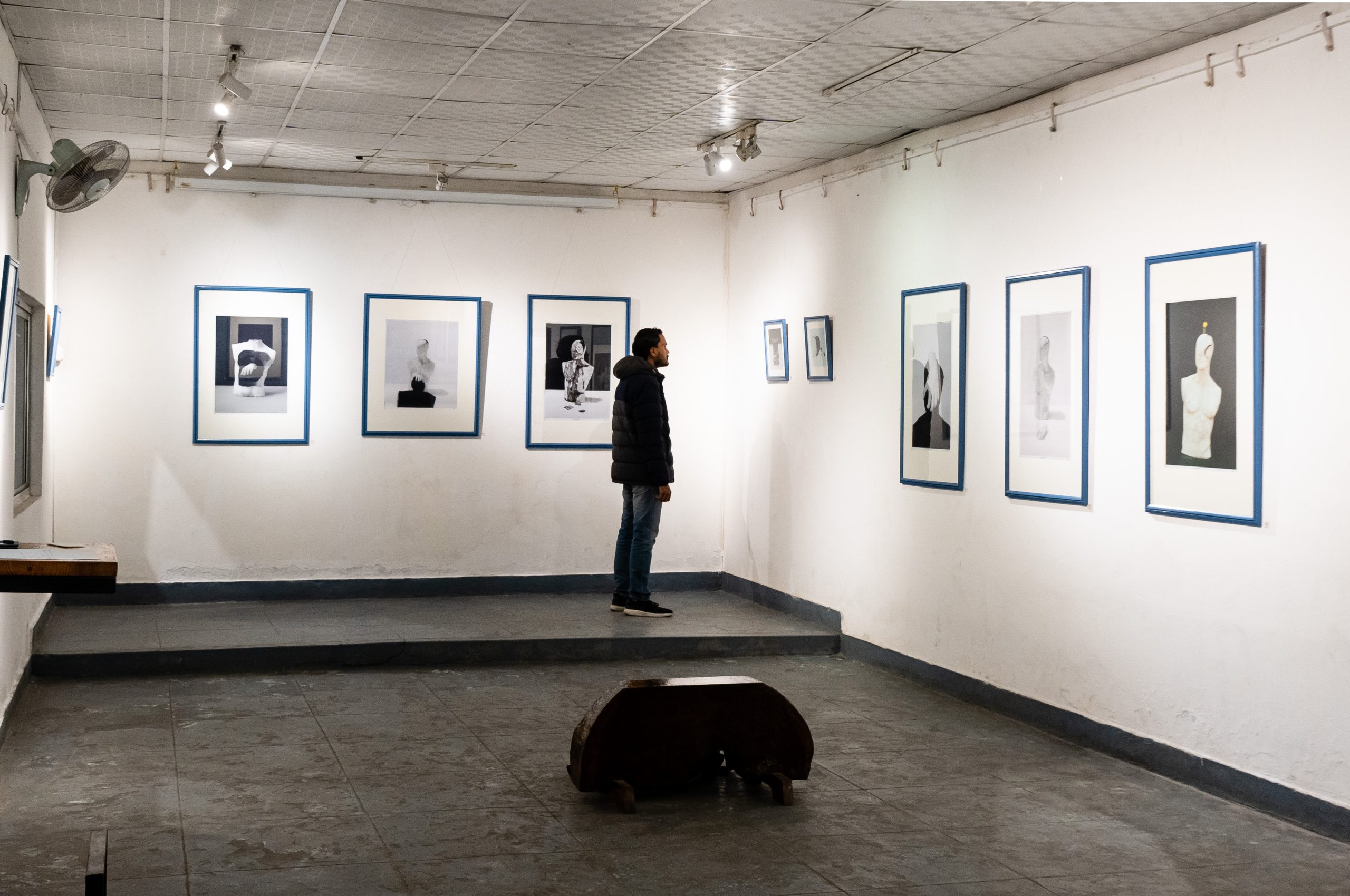
The exhibition, which began on January 8, draws upon minimalist traditions, echoing the works of well-known photographers Edward Weston and Minor White. The interplay of light and shadow, form and void, evokes a deep sense of introspection and contemplation. Piyush’s work features a restrained use of elements, allowing the essence of his subjects to emerge with quiet strength.
According to the artist, ‘Dust of Imagination refers to the transient and ever-evolving nature of human thought and creativity. Just as dust settles and shifts in the wind, our perceptions, and interpretations of the world are constantly changing. This exhibition captures the essence of imagination, highlighting its fluidity and the beauty found in moments of introspection.’

One of the standout photographs, titled “Thinker,” features a white mannequin with half of its head cut off, placed on a white table against a black background. The empty head of the thinker seems to symbolize the boundless potential of the human mind, which, despite being filled with thoughts, remains a blank canvas for new ideas. The absence of the top half of the head challenges the viewer to ponder the limitations and possibilities of human cognition. As René Descartes once posited, ‘I think, therefore I am,’ this piece provokes contemplation about the essence of thought and existence, as Descartes highlighted the importance of thinking as the foundation of our being.
Colorful Conversations: The Abstract Artistry of Visual Melodies
Another intriguing artwork, “Gentle Touch,” presents an old-era music player within a rectangular basket, its revolving cassette captured in a black and white background, with a mannequin hand gently placed on it. This piece evokes deep emotions, symbolizing the nostalgic connection between the human touch and the memories evoked by music. The revolving cassette represents the continuous flow of time, while the gentle touch of the mannequin hand signifies the delicate balance between the past and present. As Friedrich Nietzsche stated, ‘Without music, life would be a mistake,’ this artwork encapsulates the profound impact of music on human emotions.
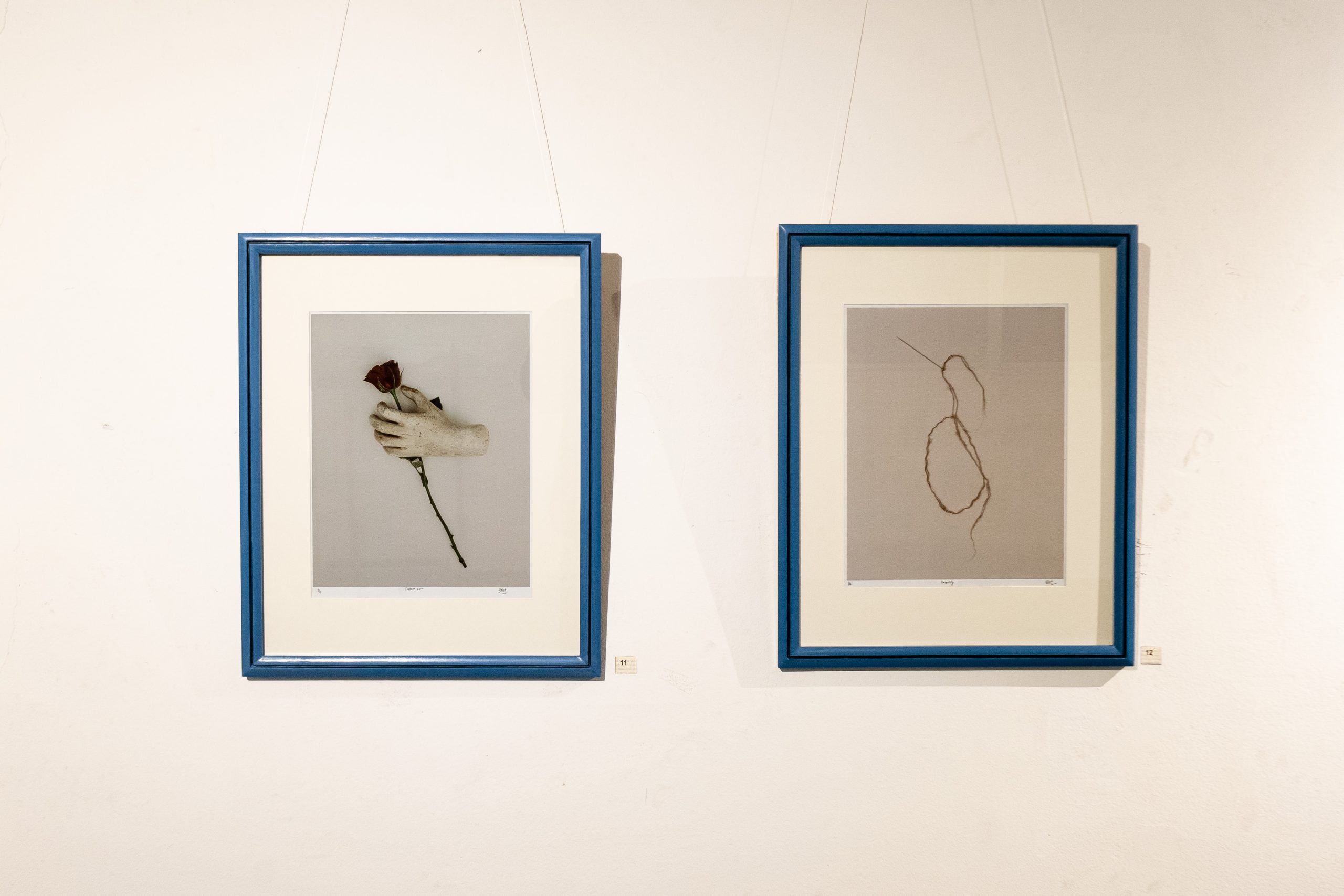
“Pretender II” features two mannequins in two tones, one black and one white, positioned to indicate the battle of two minds. This artwork delves into the philosophical concept of duality, exploring the internal conflict between opposing thoughts and emotions. The shadows cast by the mannequins symbolize the ever-present nature of our inner struggles and the duality of human existence. As Carl Jung noted, ‘The meeting of two personalities is like the contact of two chemical substances: if there is any reaction, both are transformed,’ this piece challenges viewers to reflect on their internal battles and the transformations they undergo.
In the photograph titled “Distant Lover,” a white hand holding a red rose against a white background creates a striking contrast. This piece evokes the complexities of love and longing, symbolizing the fragile yet resilient nature of human relationships. The red rose, often associated with deep emotions and passion, stands out against the purity of the white hands, reflecting the dichotomy of love. As Khalil Gibran eloquently said, ‘Love knows not its own depth until the hour of separation,’ this artwork appears to capture the essence of distant affection and the yearning it brings.
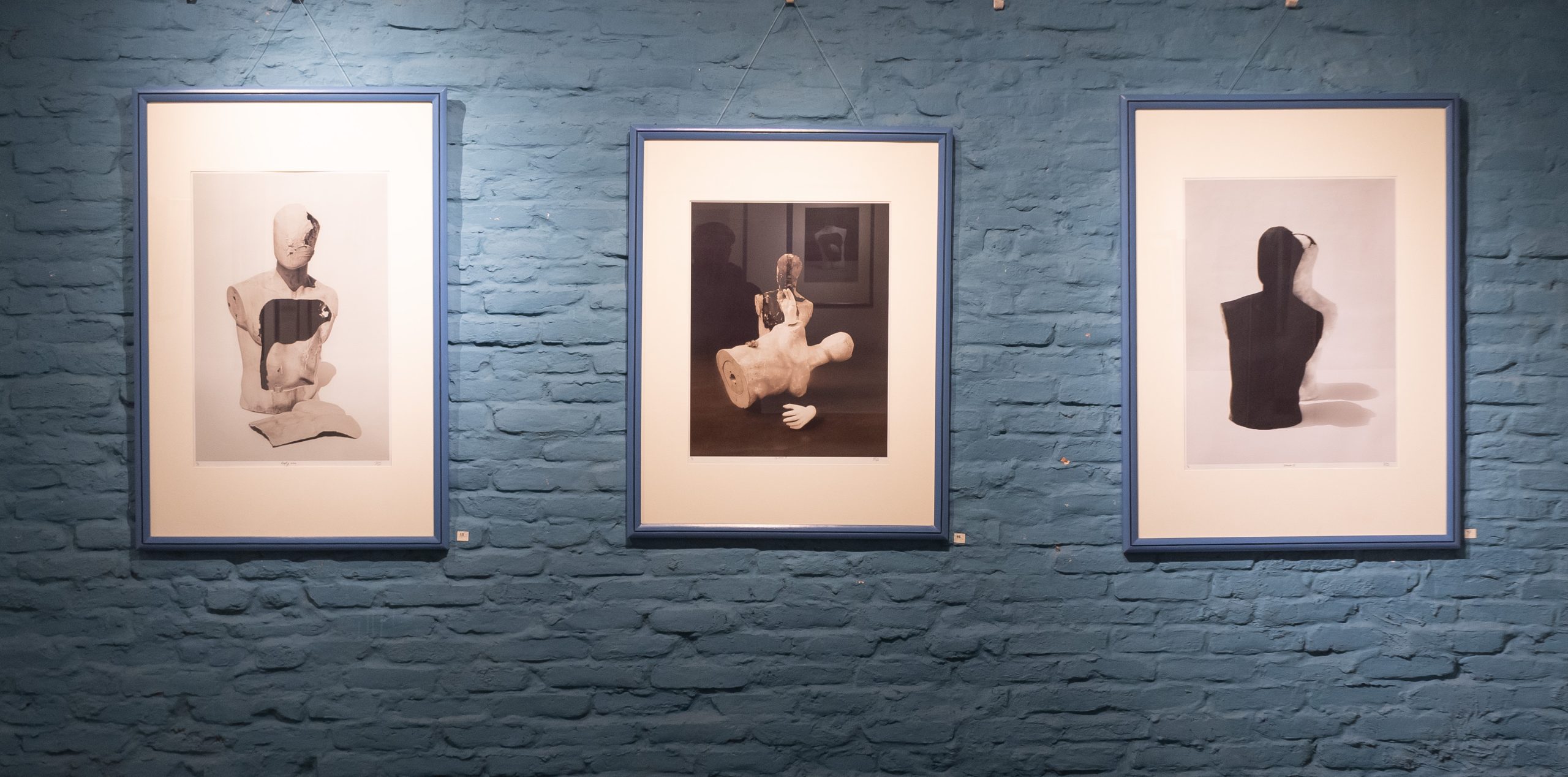
In “Day Dreamer II,” a white mannequin with a cracked face and an orange flower blossoming from its head appears to capture the interplay between reality and imagination. This artwork suggests the process of losing oneself in thoughts and the emergence of creativity from the cracks in our consciousness. The blossoming flower might represent the growth of new ideas and the beauty found in moments of introspection. As the philosopher Søren Kierkegaard remarked, ‘Life can only be understood backward; but it must be lived forwards,’ this piece encourages viewers to contemplate the significance of daydreaming and its role in shaping our future.
The artwork titled “Window” depicts a white mannequin with a missing head and a hollow stomach, standing with another mannequin looking inside the space. A hand emerges from the hollow stomach, which can be interpreted as symbolizing self-reflection and the exploration of one’s inner world. This piece can be seen as an exploration of the idea of finding beauty in emptiness and the continuous search for self-understanding. As Friedrich Nietzsche suggested, ‘He who fights with monsters should be careful lest he thereby become a monster. And if you gaze long enough into an abyss, the abyss will gaze back into you,’ this artwork invites viewers to delve into their subconscious and confront their innermost thoughts.
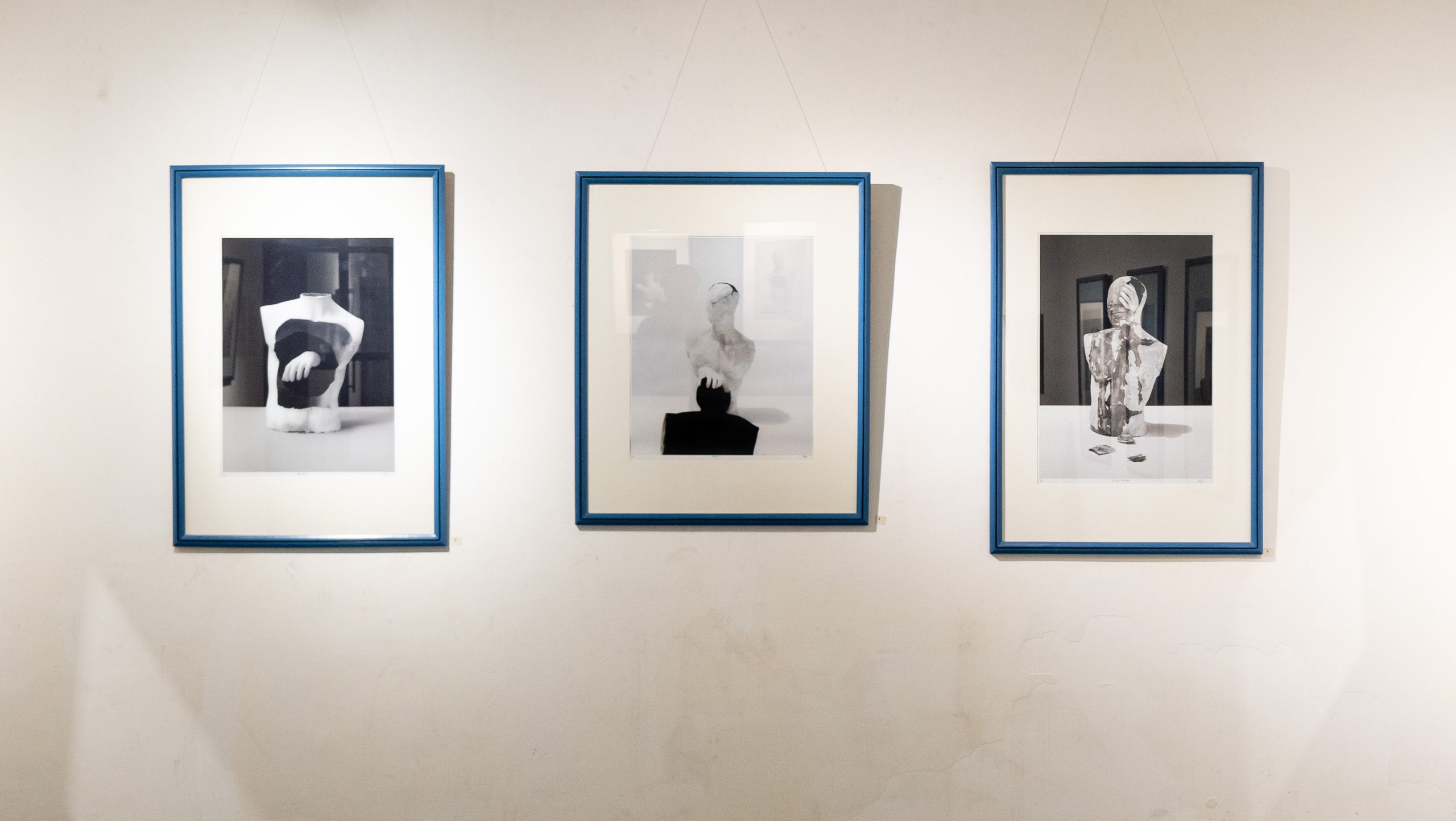
Through this exhibition, Yadav invites viewers to embark on a journey of self-discovery and contemplation. He stated, “The world is a reflection of our inner selves, we don’t see things as they are, we see them as we are!” This idea is evident in each carefully crafted photograph, which serves as a meditation on existence and the enduring power of the human spirit.
As Yadav eloquently puts it, ‘In my journey of imagination, I find myself on a never-ending misty road… Sometimes, this thought leads me to question whether I am coming from my journey or heading toward it.’ Dust of Imagination is a manifestation of this journey, offering a glimpse into the artist’s inner world and encouraging viewers to contemplate their paths.
The exhibition will conclude on January 29, 2025.

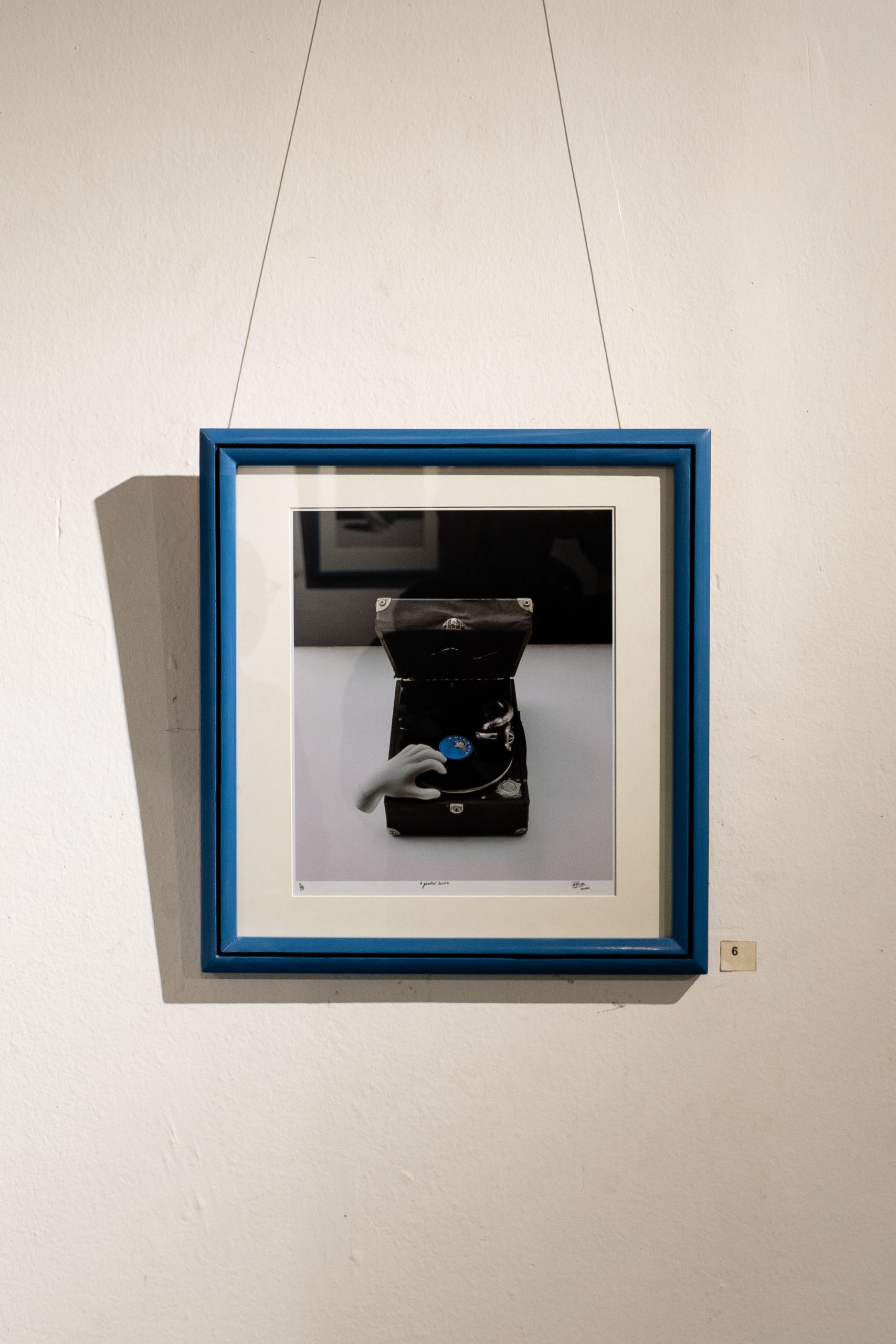
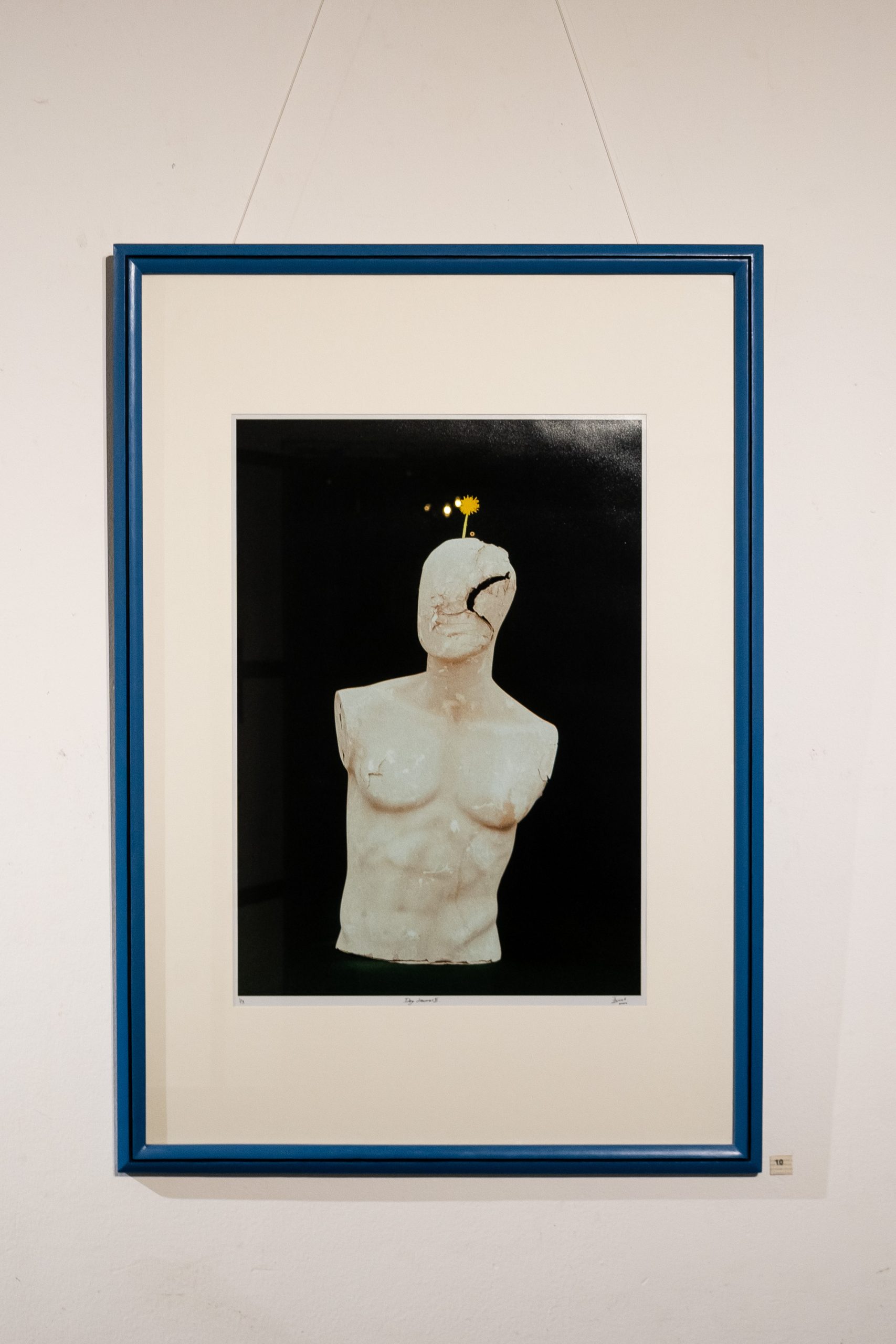

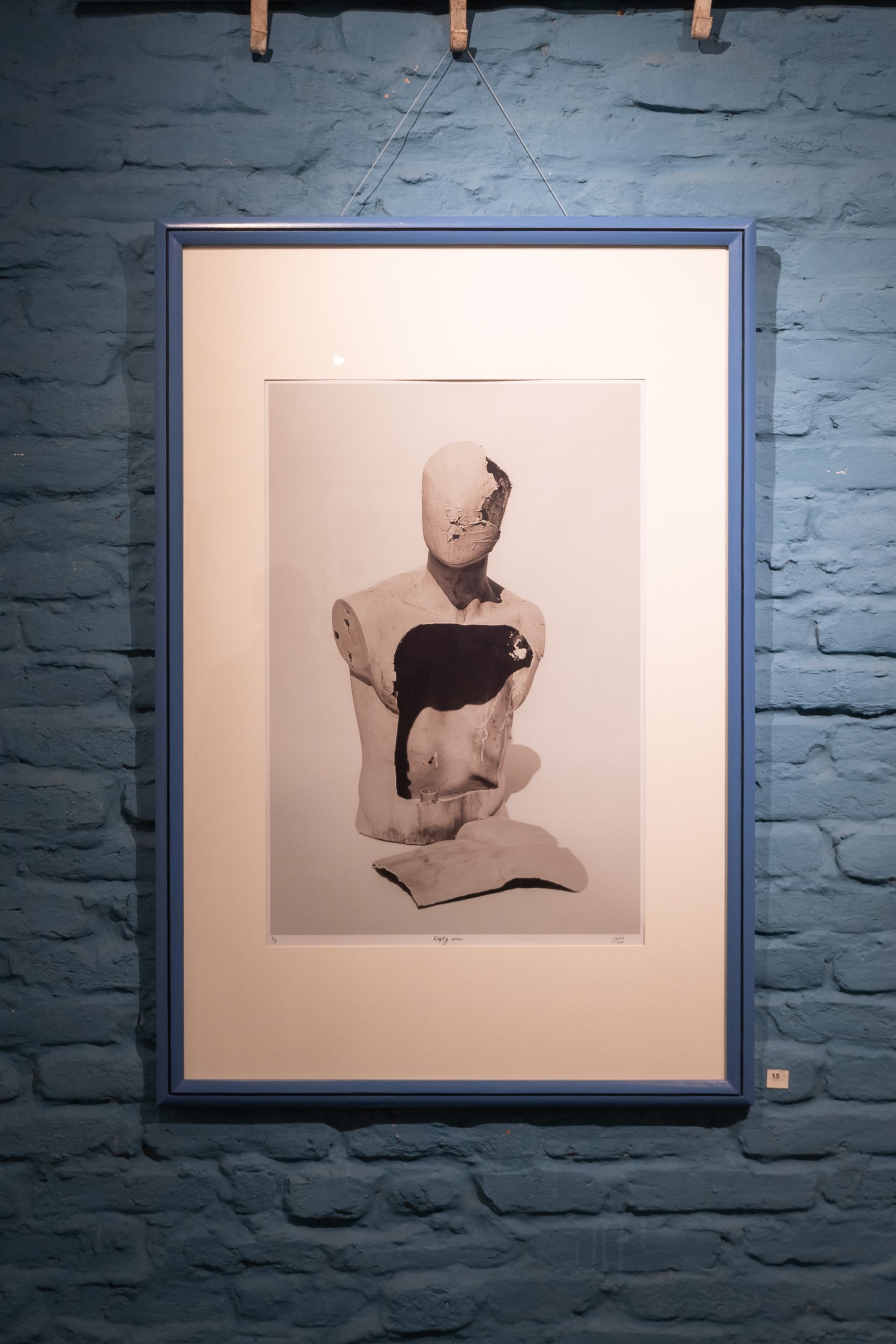

Artist behind ‘Dust of Imagination’:
Piyush Yadav is a visual artist who prefers photography as his medium of artistic expression, but he also experiments with painting, sculpture, installations, and mixed media. His professional art practice investigates themes such as human perception, reality, impressions from nature, and the idea of creation.
His works typically evoke thoughts, challenging the viewers to question their presumptions and ponder on the underlying riddles of existence. Born in Birgunj, Parsa, Yadav currently resides in Lalitpur. He graduated with a BFA from Kathmandu University School of Arts in 2022. Alongside his professional art practice, he works as a freelance photographer.
(Photo Courtesy: Jayaraj Kumar Roy Danuwar/Piyush Yadav)















